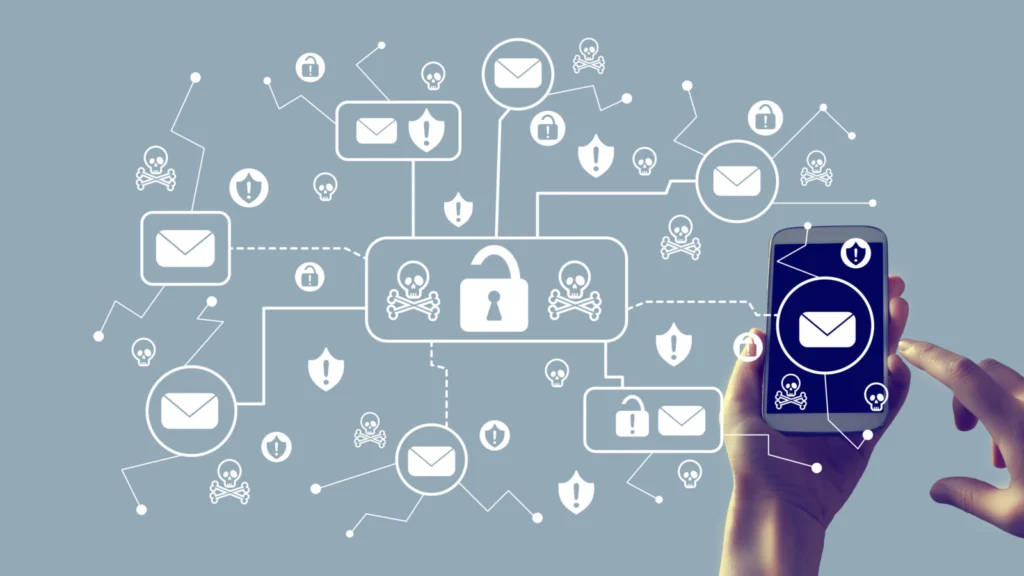More than 3.8 billion people worldwide have internet access today, and as many as 3 out of 5 consumers globally have been targeted by tech support scammers.
Who among us hasn’t either seen the pop-up warning us that our computer is INFECTED WITH A VIRUS or heard about it from a friend or coworker? Some people even get a phone call out of the blue informing them that their computer is at risk or already compromised. These are indicators of tech support scams.
If you get that unsolicited call or suddenly a pop-up freezes your computer, take a deep breath.
Not only are these scenarios unnerving, they can also be frightening. A coworker told me of a time he was left with no other option but to pull the plug, literally(!), on the whole thing. The pop-up had frozen his computer to the point where he was not able to close the window, use task manager, shut it down normally, nor do a hard shut down. He was forced to reach down and unplug his computer from the power supply to stop the attack. (What he did is ONLY to be used as a LAST RESORT.)
Scammers will try to make you afraid of viruses that could ruin your computer and of the time and money you might have to spend getting it fixed.
They will move quickly, so you do not have time to stop and think. But make sure to stop and think. Scammers will try to get you feeling off balance, then offer themselves as the people who will help you feel safe again… for a fee.

Examine the warning signs.
These are red flags signaling that you are the target of a tech support scam.
- An unsolicited phone call or other communication in which the caller claims to work for Microsoft, Apple, Norton or another well-known technology/software/antivirus company.
- A pop-up that warns you that your computer has been infected with a virus or malware and is also directing you to call a phone number for help to fix the issue. Or the pop up may request that you download an app rather than make a call.
Your next steps.
- Ignore the intrusion.
- Don’t answer the phone or hang up. Do not engage in conversation with the caller. And do not download/install any unknown applications.
- Close the pop-up (fake alert) by:
- Windows PC: Press Control-Alt-Delete to bring up the Task Manager where you can end that pop-up.
- Mac: Press the Option, Command and Escape keys. You could also use the Force Quit command from the Apple menu.
- Avoid being scammed and follow up with authorities.
- If you did call the number or answer the phone and are talking with someone:
- Do not allow any remote access to your computer.
- Ask if there is any fee for the service they claim to be providing, and if the person on the phone says there is a fee, hang up.
- Per instructions from Microsoft and the AARP, report the caller’s information to local authorities and Microsoft at www.microsoft.com/reportascam.
- If you did call the number or answer the phone and are talking with someone:
Let’s look at the basics of a Tech Support Scam.
- install a virus, or
- other malware, and/or
- request payment to fix an “issue” that may never have existed.

These scams are being battled by many in the computer and internet security industry in an ongoing capacity. Late in 2018, Microsoft reported new breakthroughs in combating them.
Remember, internet users of all ages are targeted these days. In fact, while the elderly are still more likely to be contacted via a phone call, the younger generations are very often redirected to a scammy website or tricked by a pop-up per this study by Microsoft.
Regardless of how they contact their potential victims, the scammers’ goal remains the same. They want to set up a remote session with the victim’s computer so that they are able to install malware, steal personal and banking information, turn off antivirus, and/or leave software that allows remote access to the infected computer long after the scam seems to have ended.
Microsoft’s study also suggests tech support scammers are focusing efforts on the US, India, and China, where a higher percentage of consumers report losing money to a scam. Twenty-two percent of those surveyed in India reported losing money, while the figure for the US and China was 21 percent and 16 percent, respectively.
Terms and Definitions
Who are the players in a tech support scam?
- Traffic Generator – the method of acquiring potential victims or convincing them to visit the site with a pop-up
- Pop-up Host – the hosting site for the pop-up itself
- Lock-up Developer – the designer of the pop-up who ensures the pop-up cannot simply be closed out
- Call Center – where victim calls are fielded, and where the majority of the scam takes place
- Front Company – The legitimate-seeming tech support business responsible for the scam
What can you do?
In addition to the steps that are mentioned in this blog post, here are a few very helpful links to sites where you can find further information and details regarding tech support scams, plus additional steps you can take to protect yourself.
written by
Rachel Meerson
June 25, 2019
Stay informed with industry-relevant emails curated by our team of experts.
We send out emails once or twice a month relating to IP Services, industry news, and events we'll be attending so you can meet our experts in person.
Rachel Meerson



